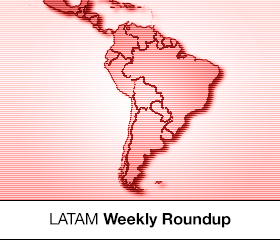Rio to Have Beacons Network for OOH; Argentinian Mobile Market in Numbers
by on 8th Aug 2016 in News


This week in the LATAM Round Up: Rio de Janeiro will have a beacons network to be used in OOH campaigns; Mobile market in Argentina to reach more than 70% of the population – half of them with smartphone devices – by the end of 2016; Rio Olympic Games expected to be the most digital games ever, according to several reports published by the industry in the first week of the event.
Clear Channel launches first beacons network in Latin America
Outdoor media company Clear Channel announced the first Latin American beacon network. The project is being implemented in Brazil, in order to send and capture mobile data to be applied in out of home (OOH) campaigns using mobile apps.
Clear Channel are working in a partnership with Aurea, specialised in geolocated marketing, which will allow interactive campaigns targeted to specific audience segments after crossing different data sources. Initially, 200 beacon points will be installed in Rio de Janeiro: both in digital clock and water dispensers in the city. They expect to expand the network to other cities in the country and later in other countries in Latin America.
“OOH was always seen as a offline mass media, but our investments in new technologies, like beacons, have shown that the segment is constantly evolving, focusing on personalised campaigns”, sai dario Gohda, development director, Clear Channel.
Rodrigo Mazzilli, director, Aurea Tecnologia, emphasises that beacons are a rising technology. According to the company, the number of installed beacons increases 18% every quarter, and has already reached six million devices.
Argentinian mobile market: 71% will have at least one mobile phone
Argentina occupies the fourth position in Latin America in terms of population and GDP. Also in the mobile market, according to eMarketer, which forecasts that 71.4% of its population will own at least one mobile phone by the end of this year — considering that they will use it at least once per month.
In total, the mobile market in Argentina sums 31.3 million people, still behind Brazil (133.5 million mobile phone users), Mexico (82.2 million) and Colombia (33 million). When considering the number compared to the country's total population, Argentina is only behind Chile, with has a mobile penetration of 73.9%.
The mobile phone user base will grow by 2.1% this year, and keep modest throughout the years (1.4%) until 2020, when the market should reach 33.3 million individuals.
It is worth mentioning that eMarketer’s predictions are more conservative compared to other sources. GSMA, for example, sets mobile phone penetration in Chile at 93%.
In total, the number of Argentinian smartphone users is expected to grow 16.9% and reach 16.2 million users this year, or 37.1% of the population. The number represents almost half of the total amount of mobile phone users (51.9%). eMarketer puts Argentina ahead of only Peru, with 8.6 million smartphone users, and Chile, with 7.9 million.
Olympic games: great expectation for digital campaigns, especially the 'second screen'
In the first week of Olympic Games in Brazil, some research about data and the potential of the games was released trying to forecast the sports in the digital universe. Overall, this is expected to be the most digital games in history.
Also, the digital audience will be bed by millennials. In this group, 79% expect to watch the games online; 7 out of 10 will do it using mobile devices. Those numbers come from a Rubicon Project’s research.
Yet, TV will be the most accessed channel in the Olympics. It was mentioned by 79% of people in total, followed by desktop (22%), mobile phone (15%), and tablets (5%), according to a Millward Brown research released late last week.
However, a considerable number of the TV audience will be connected in with their second screens, doing other activities while watching the games — such as accessing social media. This is what a Teads report brings up, using data collected in other sports events (America's Cup, for example, which analysed Brazilian, Mexicans', Colombians' and Argentines' habits).
According to the study, focused in Latin American media consumption, the audiences spent 243 minutes reading editorial content before and after the matches in their mobile devices. This way, Teads suggests that advertisers should use the Olympic games to engage with their consumers in premium sites, where the audience is already looking for content related to the Olympic games.
Finally, research published by RadiumOne emphasises that two-thirds of the British audience planning to watch the Olympics on TV will use another device connected to the internet simultaneously. In the group of 64% of the audience that admits using the second screen, activities non-related to the Olympics is on the top of the list (53%). Instant messaging about the games (31%) and searching for information online about the matches (30%) follow the list.








Follow ExchangeWire